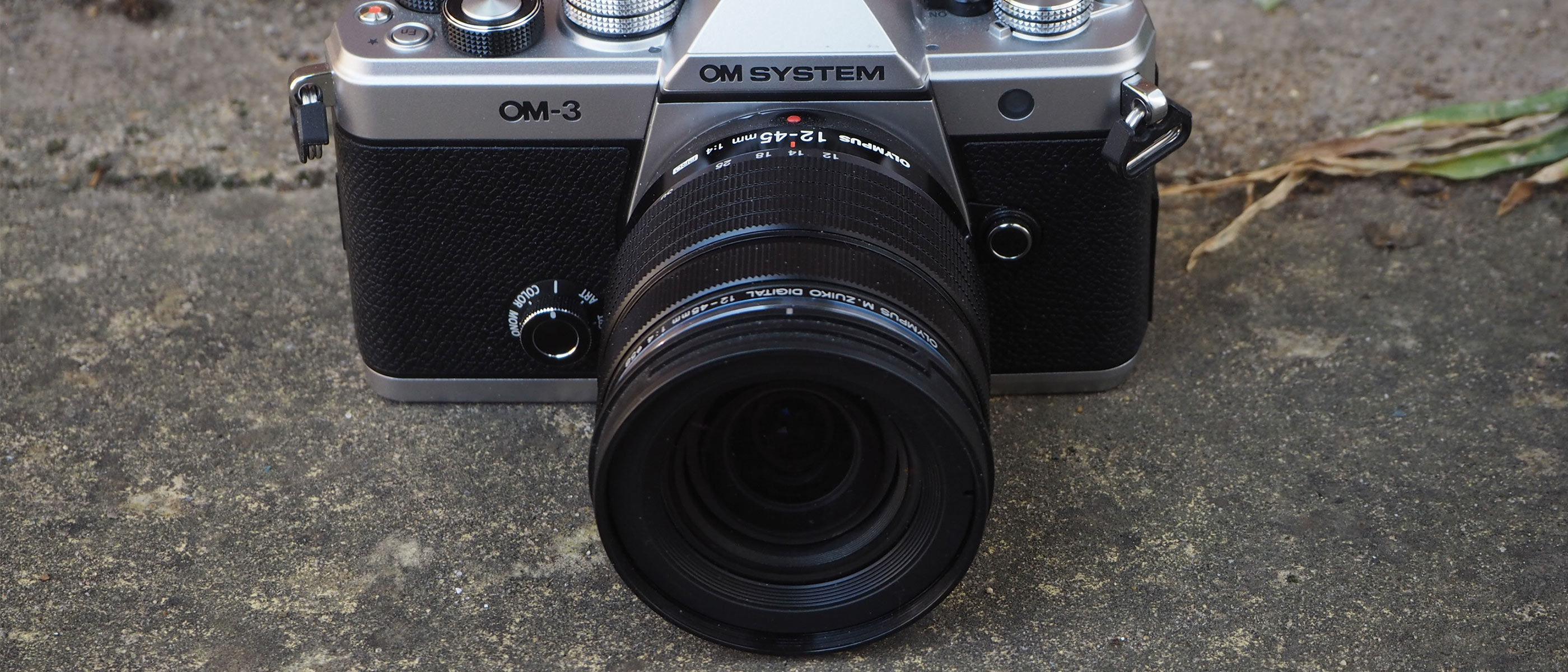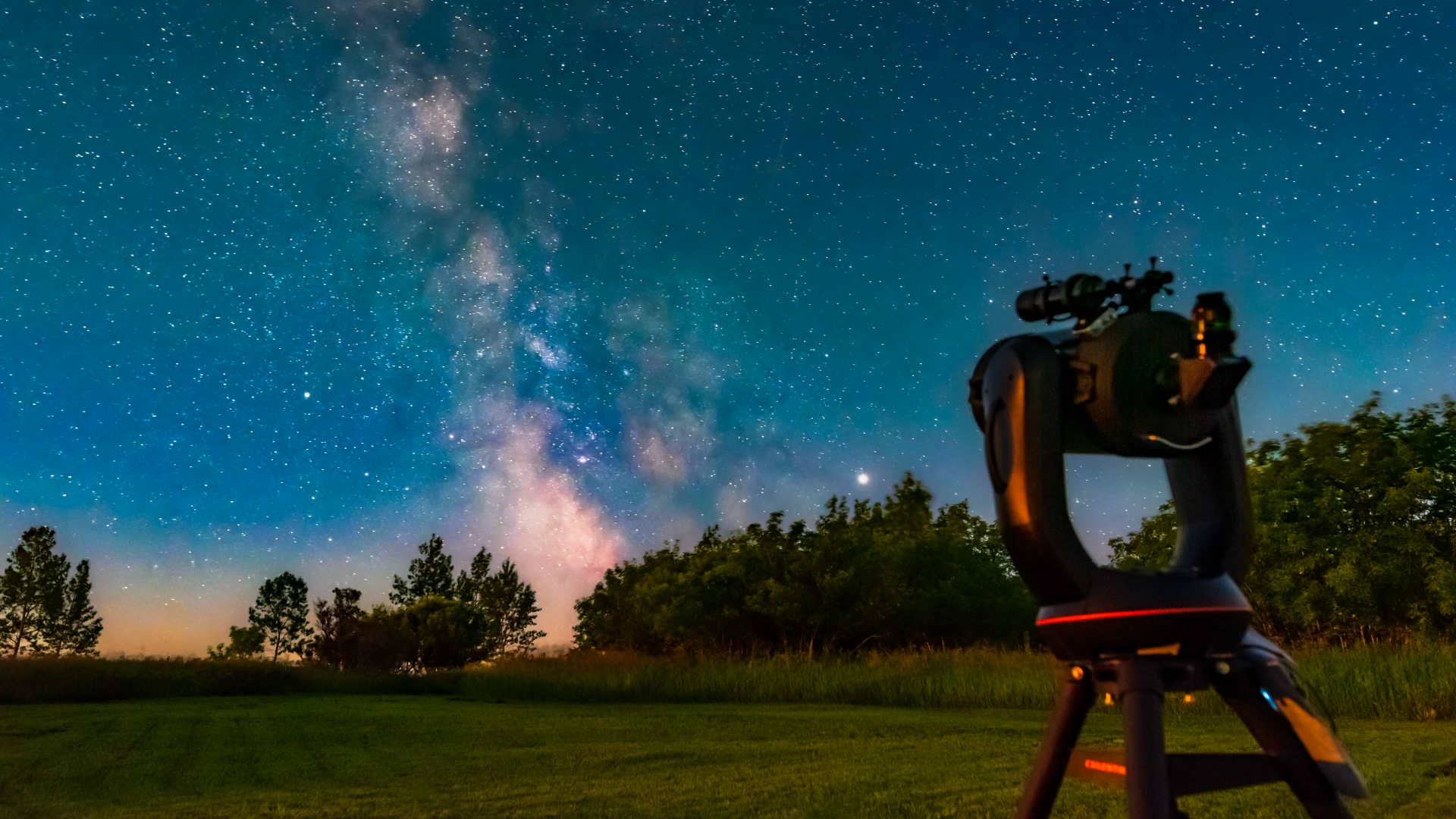Space Verdict
Broadening the available scope for creative and astrophotographers alike. We've no complaints with the images the camera delivers, particularly with Starry Sky Auto Focus selected and the ability to make manual tweaks to fine-tune results further. This is a capable camera with a lot to explore — we've only scratched the surface.
Pros
- +
Dedicated Starry Sky shooting mode
- +
Robust magnesium alloy body with IP53 level weatherproofing
- +
In-camera image enhancements
Cons
- -
The large number of features and controls — need an extended period of familiarization
- -
Not a full-frame sensor
- -
Chunky and weighty
Why you can trust Space.com
Its cameras may no longer bear the Olympus brand name, but the OM System is sensibly mining that company’s heritage for all it is worth. A case in point is the new OM-3, based on an Olympus film SLR with the same model name from the 1980s. Retro cameras with rangefinder-like switches and dials like this one remain popular — just look at Fuji’s ‘X’ series, lots of which feature in our Best Fujifilm cameras guide, and its recent hits like the X100V / VI. Plus, Olympus did formerly release a whole slew of digital versions of its 1960s PEN camera more than a decade ago.
Indeed, this camera reintroduces the funky, if eccentric, faceplate Creative Dial previously seen on the Olympus PEN-F. But it also inevitably and wisely takes on board a lot of the technology recently featured in the range-topping OM-1 Mark II. Sitting just beneath that flagship in its manufacturer’s lineup, it commands a premium price because of it. So, can the OM-3 offer potential purchasers the best marriage of old and new? And all while offering enough manual control over exposure, light sensitivity and aperture to make it one of the best cameras for astrophotography? Read on to find out.
OM System OM-3: Design
★★★★
- Quirky front and backplates
- Flip-out, angle-adjustable backplate LCD screen plus eye-level electronic viewfinder
- Top plate shooting mode dials festooned with custom settings, plus front and back command dials for rapid scrolling
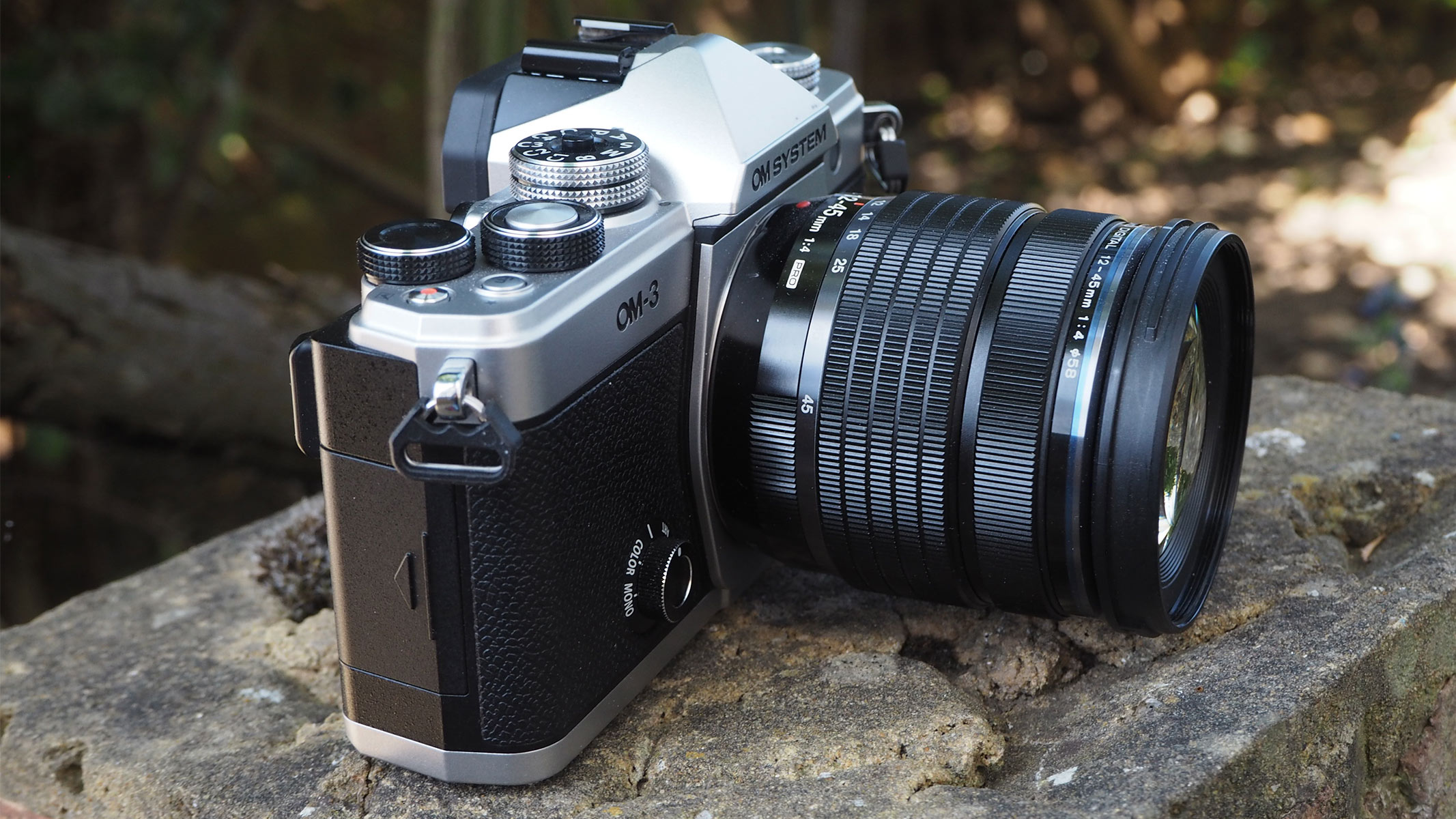
Classic in looks and immediately catnip for those who love a familiar retro design, the OM System straddles two stools. Inspired by an identically named Olympus SLR from 1983, it also takes on board innovations introduced in the OM System’s range-topping, OM-1 Mark II. This is a potential best of both worlds, helping to cater to everyone.
Shot composition and review is via a choice of flip-out and twist 3-inch touch panel LCD screen with a helpful 1.62 million dots or eye-level 2.36 million dot electronic viewfinder just above. We love to have the option of both, though the clarity of the screen when attempting astrophotography in the pitch dark just has the practical edge for us in those circumstances. Also, our nose butted up against the backplate LCD when using the viewfinder above.
System: OM System Micro Four Thirds mount mirrorless camera
Sensor: 20.4 effective megapixels, Four Thirds CMOS
ISO range: Up to ISO 102,400
Burst shooting: Up to 120FPS in Pro Capture or Silent modes
AF: 1053 points cross-type phase detection/contrast AF
Video: 4K resolution video clips at up to 60FPS
Screen: 3.0-inch, 3:2 aspect ratio vari-angle touch panel LCD with 1.62 million dots
Dimensions: 139.3 x 45.8 x 88.9mm
Weight: 496 g with battery and memory card, or 413 g body only
With lots of rangefinder camera-like dials on its busy-looking top plate, this is certainly a device for those who like to get hands-on with their photography and make manual changes, rather than purely relying on auto focus and exposure. The camera delivers if all you want to do is point and shoot, of course, and there is always a place for that, but you’d hardly be exploring its capabilities fully if you did so. It feels like the OM-3 is the camera for those of us who want to shoot digitally, but at the same time miss shooting on film.
Just one image card slot for the common SD memory card is provided.
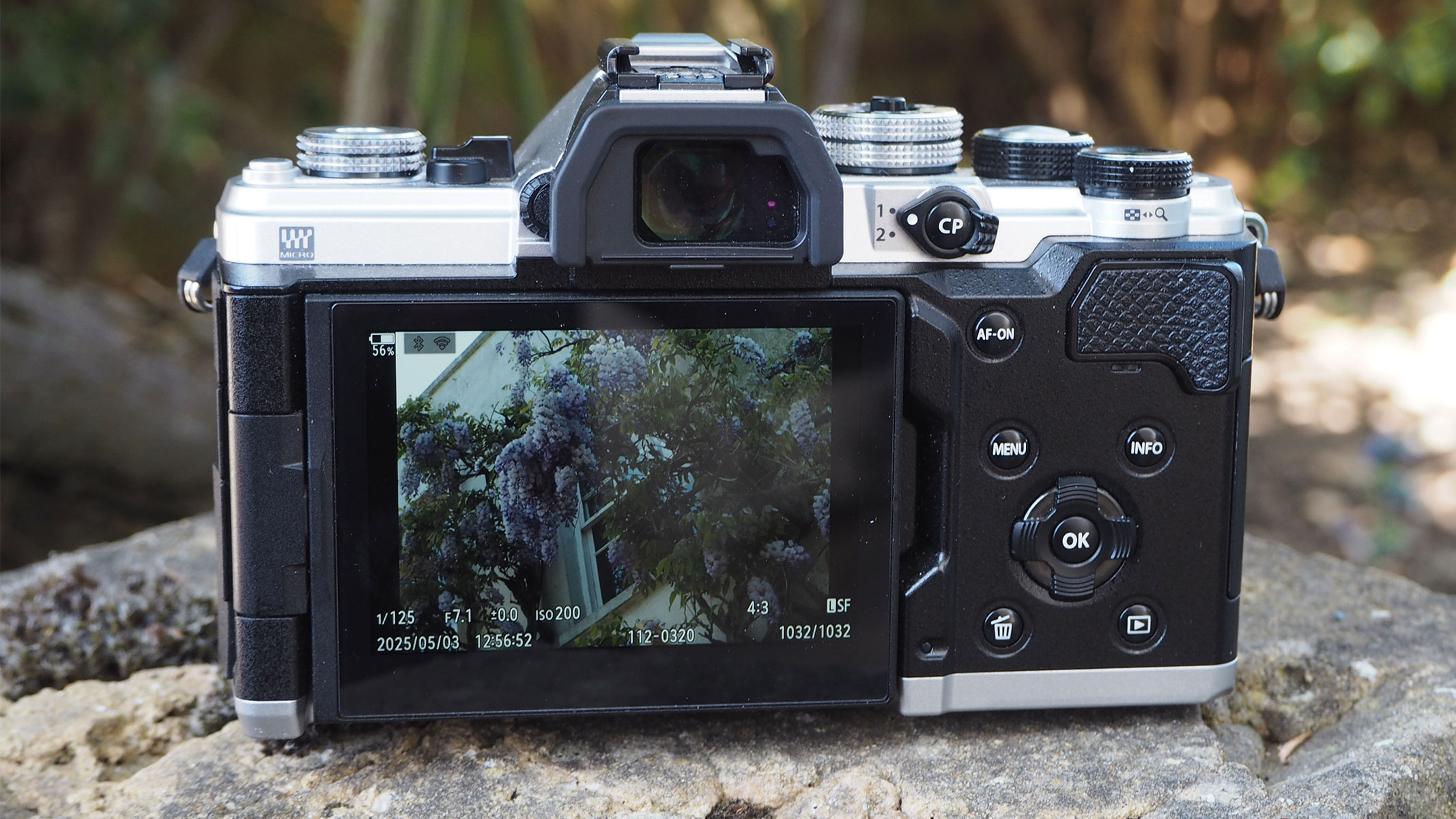
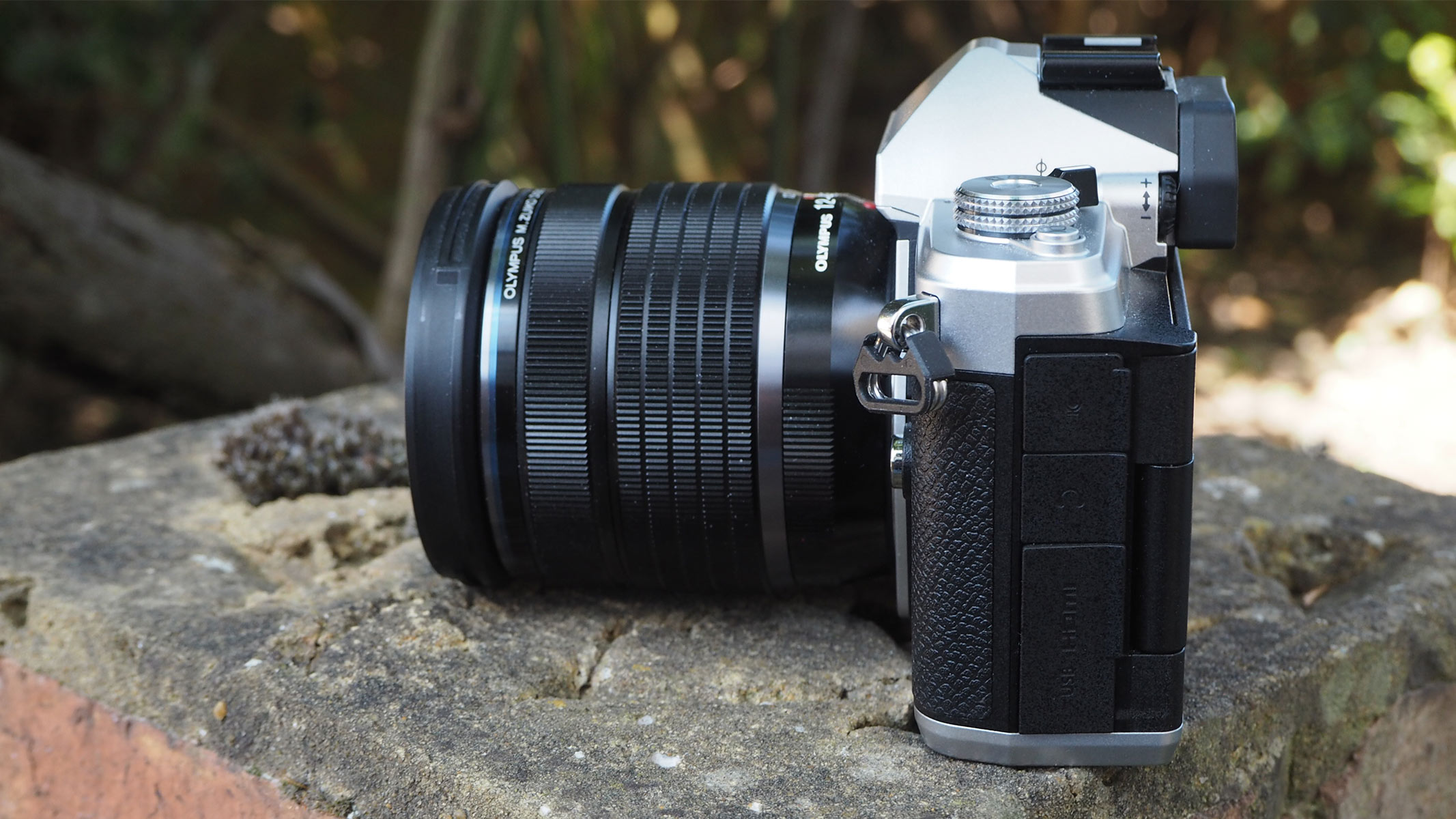
The camera feels substantial when gripped in the palm, thanks to a magnesium alloy construction that is splashproof and dustproof, as well as being freezeproof, which proves useful for the great outdoors. A screw thread is helpfully provided at the base for affixing the camera to a tripod for astrophotography.
Breaking space news, the latest updates on rocket launches, skywatching events and more!
OM System OM-3: Performance
★★★★★
- Four Thirds format 22.9MP stacked backside-illuminated CMOS sensor providing a 20.4MP effective resolution
- Five-axis body integral image stabilization system equivalent to 8 steps
- 4:3 aspect ratio images by default
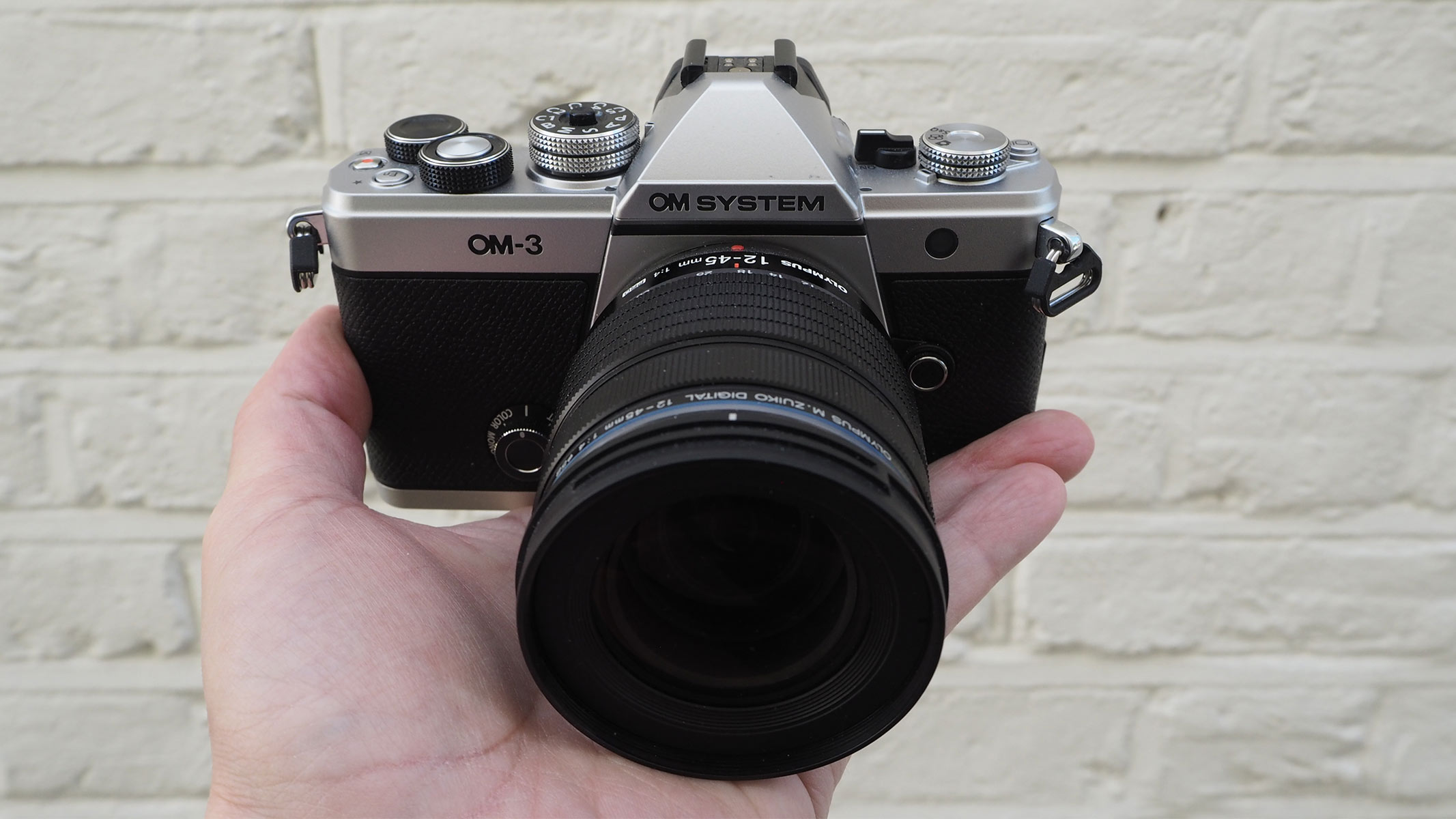
The performance of the OM System OM-3 is based largely on a happy marriage of a 20.4-megapixel effective resolution Four Thirds format sensor, which we’re told is the same as that found in its OM-1 II flagship, and its manufacturer’s latest generation TruePic X image processor, which crunches data and keeps things zipping along.
There is five-axis in-body image stabilization provided here, as there has been for quite some time for Olympus/OM System cameras, which provides a belt-and-braces approach when allied with tripod use. A self-timer is also available, in case pressing the shutter release jogs the camera and unintentionally creates image blur, which is something we want to avoid when attempting night sky photography.
On the OM-3, we’re further able to potentially enhance the camera’s performance as an astrophotography tool by scrolling through the menu settings and activating the Starry Sky Auto Focus setting, which can be set to cover a wide area, while also switching to manual and/or bulb shooting modes. This allows us to control the duration of exposure, settling on a 15-second duration for our photography in most cases, as well as choosing ISO 3200 light sensitivity setting. Naturally, we were also shooting at the lens’ widest angle and maximum aperture setting. If we’re being picky, this did introduce some slight instances of vignetting/corner shading that weren’t visible for daytime images. That said, it does provide a framing device that draws the eye into the central portion of the night sky image, so isn't a deal breaker for us. However, we were impressed with the clarity delivered, with a lack of compromise visible even when compared with daytime images. These are similarly sharply rendered despite what, on paper, reads as a smaller, less powerful image sensor than some of its competitors offer. The ability to control exposure with a quick spin of a thumb wheel proved a practical boon for us.
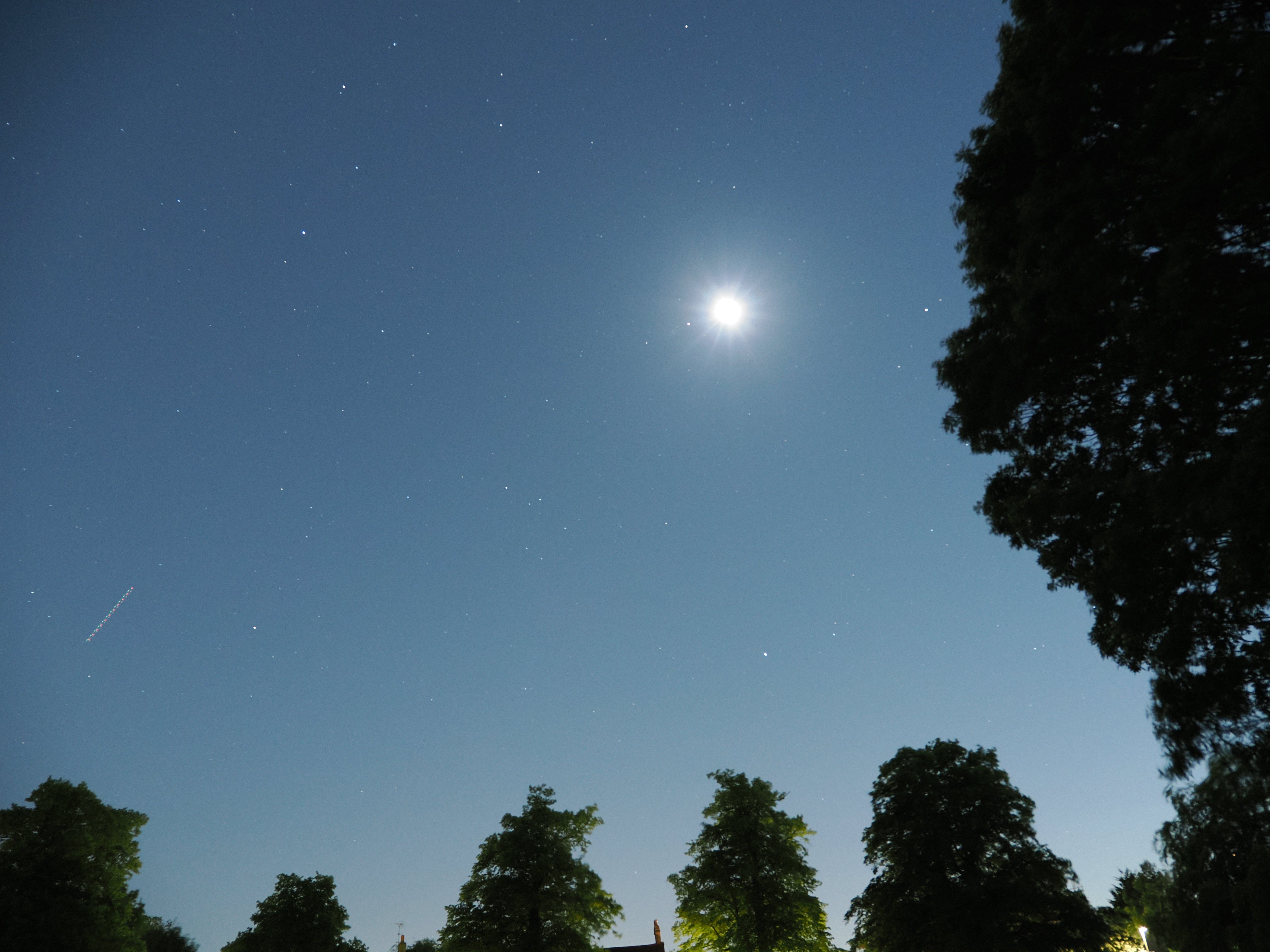
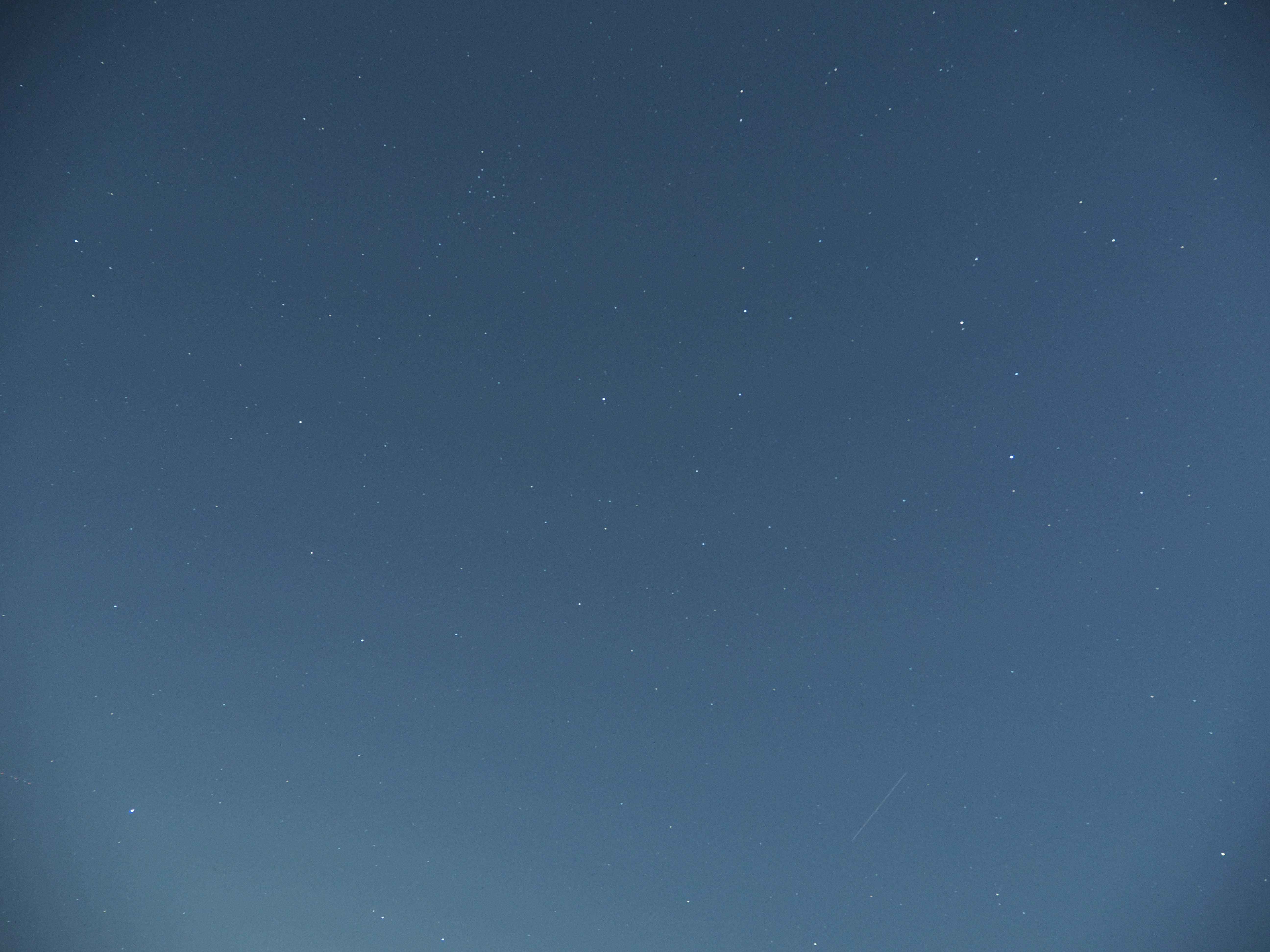
OM System OM-3: Functionality
★★★★
- A choice of JPEG or Raw formats when shooting stills at up to 20.4MP effective
- 4K resolution video clips at up to 60fps
- Adjustable light sensitivity up to ISO 102400
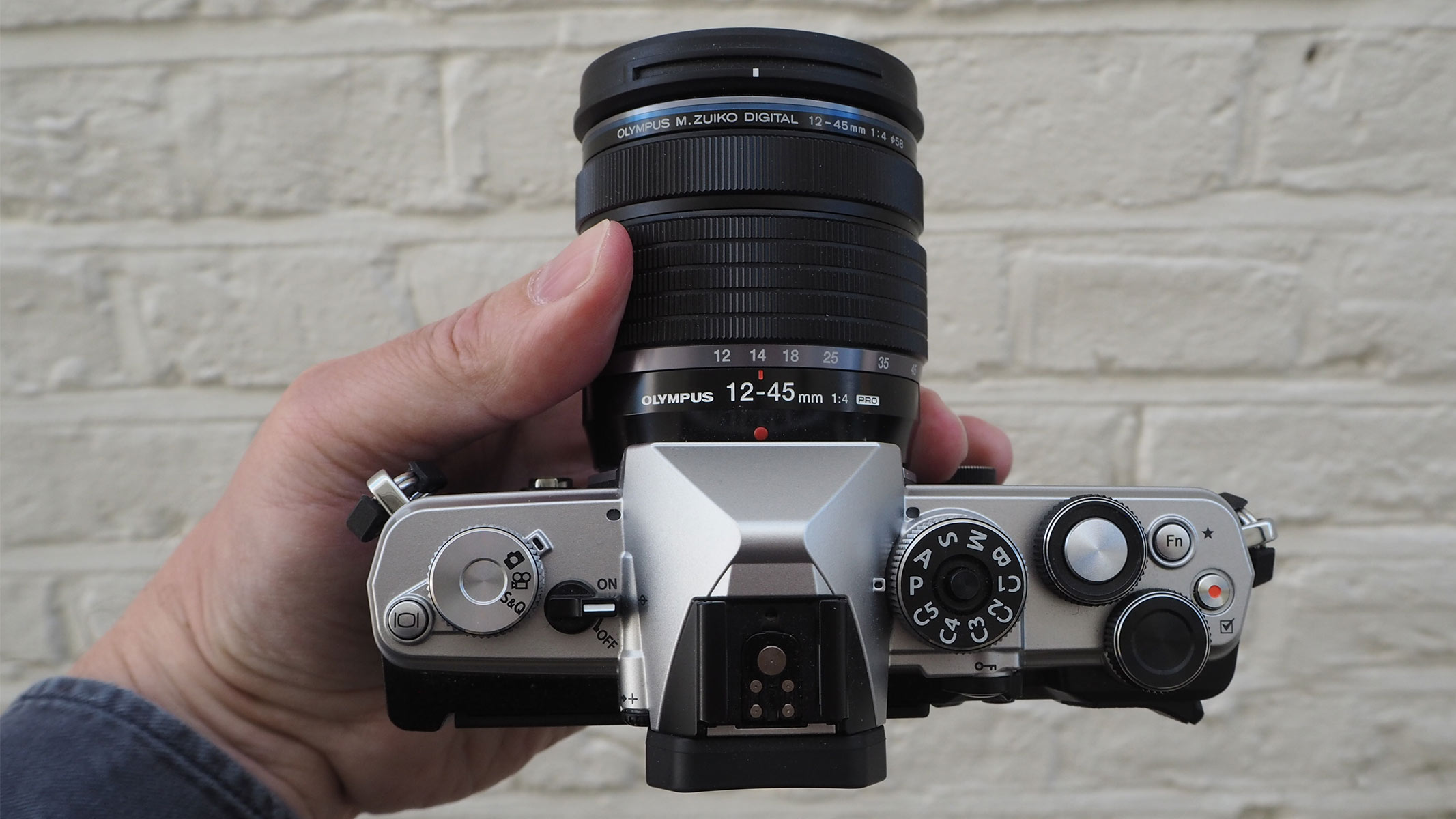
The OM-3’s default image ratio is a standard 4:3 when first activated, as might be expected from a camera incorporating a Four Thirds format sensor. Further selectable options include 3:2, 16:9, 1:1 and 3:4. Given that the physical dimensions of this chip are smaller than the APS-C and Full Frame sensors found in competing cameras in its class, the OM-3’s maker hasn’t over-egged the pudding. It offers a sensible 22.9 total resolution that’s made effective use of in delivering 20.4MP imagery. There are other benefits to the smaller sensor, in enabling the use of more compact lenses. These, in turn, offer a focal range bigger than their size suggests. For example, the 12-45mm f/4 Pro lens we used with our review sample does the job of a 24-90mm lens in 35mm film terms, making it suitable for everything from wide-angle views of the night sky to close-up portraits at the telephoto end with attractive background blur, known as ‘bokeh’. In other words, we have a jack of all trades device, providing a quality of result that is largely without compromise.
While light sensitivity can be altered with a thumb flick of a dial all the way up to ISO 102,400 equivalent, further settings worth exploring are accessed via a twist of the pimple-like Creative Dial on the OM-3’s faceplate. This takes us through alternative color and mono image capture options. While this feels like a fun, if slightly eccentric addition, for those who favor a tactile way of adjusting settings as opposed to scrolling through on-screen menus, we also get access to what is grandly termed the camera’s more experimental ‘Computational Photography’ settings via a lever encircled ‘CP’ atop the back.
The virtual Neutral Density filters, high dynamic range 'HDR' and the multi exposure and focus stacking options will benefit landscape photographers who want to maintain details in both a bright sky and a darker foreground. To access these settings, hold down the button while spinning the command dial.
Another less immediately familiar feature is the ‘S & Q’ marking on the top plate image capture mode dial, which otherwise lets us toggle between shooting stills and up to 4K resolution video clips at a cinematic looking 60fps. 'S & Q' stands for ‘Slow & Quick’, providing a mode for slow-motion video or sped-up clips, the latter useful for social media shares.
We can do a fair amount here by turning, twisting or flicking the OM-3’s manual controls without having to do a deep dive into its menus. However, this does mean a period of familiarization is required. Ultimately, we’re getting the best of both worlds. — those who want to get hands-on can do so, while anyone looking to pick up a camera and point and shoot can do that too.
OM System OM-3: User reviews
Other users and reviewers of the OM System OM-3 praise the ability to use it as an advanced travel camera that ticks just about every box required. Others suggest it is a feature-packed, everyday camera. Further described as a fabulous camera that is a joy to shoot with and one that blends fashion and function, the consensus when it comes to the camera neatly dovetails with our own findings. Another conclusion for those for whom its heritage is important is that this model is as close to a new PEN-F as you’re going to get.
How we tested the OM System OM-3
We tested the OM System OM-3 in a variety of shooting conditions, including daylight and pitch black for our night sky captures. We examined images full-sized on a desktop monitor and did not just rely on the camera’s own backscreen, as helpful as it is for expanding detail and checking critical focus when out in the field. We shot with the camera body with a supplied 12-45mm f/4 Pro zoom lens, boosting the amount of light entering the lens and hitting the Four Thirds format sensor. To do that, we experimented with alternating between 15, 10 and five-second exposures.
Should you buy the OM System OM-3
✅ You’re a budding astrophotographer: This camera will provide a helping hand without over-complicating matters.
✅ You love a classic camera design: This camera provides plenty of tactile dials and switches to allow manual control and a healthy degree of experimentation when it comes to image creation.
❌ You prefer straightforward touch screen operation: The many initially confusing and at time eccentric dials and switches may feel cumbersome for some.
❌ You want a full-frame sensor: A camera with a full-frame sensor built in could potentially deliver extra details.
The OM-3 excels as an all-round photography tool, though including functionality specific to astrophotographers via the Starry Sky AF mode is a real boon. We also loved the fact that we have access to manual control and a bulb mode for longer exposure durations. The ability to not only alter ISO but colour temperature as well, to achieve pleasing results of the night sky, was a bonus. Of course, a degree of trial and error and experimentation is required as ever, but this camera provides room to grow. Those who love a classic camera design as well as tactile operation will similarly feel that investing in the OM-3 is money well spent. Overall, while not inexpensive, fair value for money is offered here in comparison with similarly priced rivals.
If this camera isn't for you
If it is retro-styled mirrorless digital cameras that catch your eye, then Fujifilm’s ‘X’ series is obviously a close competitor which is well worth investigating, specifically regarding its X100V and VI cameras. These are priced very similarly and competitively compared with the OM-3. If you’re not fussed about the retro look, then high-end full-frame devices such as Sony’s A1 II could be worth exploring, as long as you have the budget to match. Alternatively, if you’re as keen on video as you are stills, then the Panasonic Lumix S1R II is a further option. As ever, bear in mind, it’s not just the one camera you’re investing in but a whole ring-fenced system, including lenses and myriad accessories. In that respect, the OM System OM-3 is presciently named.
Gavin has over 30 years’ experience of writing about photography and television. He is currently the editor of British Photographic Industry News, and previously served as editor of Which Digital Camera and deputy editor of Total Digital Photography.
You must confirm your public display name before commenting
Please logout and then login again, you will then be prompted to enter your display name.
